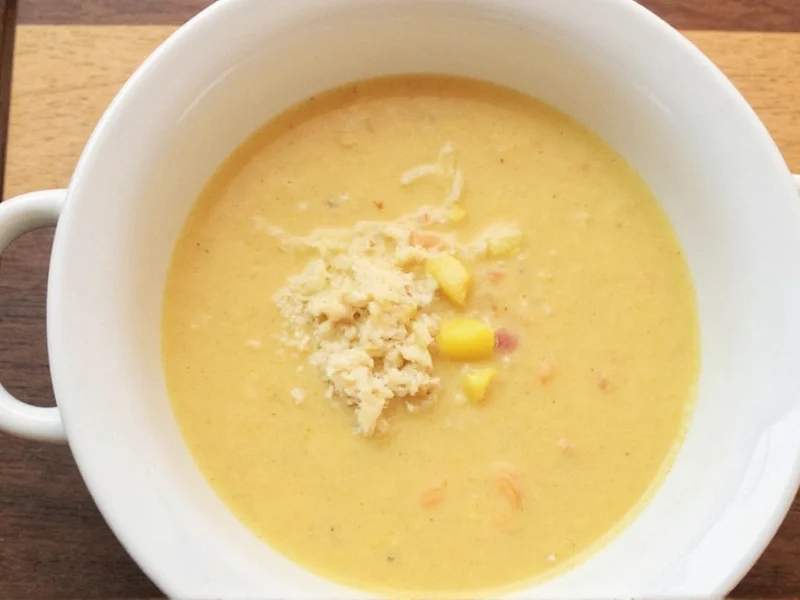When you need a substitute for cream chicken soup, understanding your specific dietary needs and desired texture is crucial. Whether you're managing lactose intolerance, following a vegan lifestyle, or simply seeking a healthier option, the right alternative can deliver that comforting creamy texture without compromising flavor. This guide explores practical, tested substitutes that work seamlessly in recipes calling for cream-based chicken soup.
Why Substitute Cream in Chicken Soup?
Cream chicken soup often serves as a base for casseroles, sauces, and standalone soups. However, many people need alternatives due to dietary restrictions, health concerns, or ingredient availability. Common reasons include:
- Lactose intolerance or dairy allergies
- Vegan or plant-based dietary preferences
- Reducing saturated fat and calories
- Gluten concerns (in some commercial cream soups)
- Ingredient shortages during cooking
Top Cream Chicken Soup Substitutes
Dairy-Based Alternatives
For those who can tolerate some dairy but want lighter options:
- Whole milk with cornstarch: Mix 1 tablespoon cornstarch with 1 cup whole milk. Creates similar thickness with less fat than heavy cream.
- Plain Greek yogurt: Whisk ½ cup yogurt with 2 tablespoons broth before adding to soup. Adds tangy richness and protein.
- Half-and-half: Provides creaminess with about half the fat of heavy cream. Best for those reducing but not eliminating dairy.
Non-Dairy Cream Substitutes
For vegan or dairy-free requirements:
- Coconut milk (full-fat): Use 1 can (13.5 oz) for every 1.5 cups of cream. Adds subtle sweetness that complements chicken well. Best for curries or Asian-inspired soups.
- Cashew cream: Blend 1 cup soaked cashews with ¾ cup water until smooth. Creates luxurious texture without overpowering flavor. Ideal for creamy soups needing neutral taste.
- Oat milk with potato starch: Mix 1.5 cups oat milk with 2 tablespoons potato starch. Provides thickness without coconut flavor.
Natural Vegetable Thickeners
For whole-food, nutrient-dense alternatives:
- Cauliflower puree: Steam 2 cups cauliflower florets, then blend with ½ cup broth until smooth. Adds creaminess with vitamins and fiber.
- White bean blend: Puree 1 cup cannellini beans with cooking liquid. Boosts protein content while creating velvety texture.
- Butternut squash: Roast and puree 1.5 cups squash. Adds natural sweetness that balances savory chicken flavors.
| Substitute | Texture Match | Flavor Impact | Dietary Benefits | Best For |
|---|---|---|---|---|
| Coconut milk | ★★★★☆ | Slight sweetness | Vegan, dairy-free | Asian-inspired soups |
| Cashew cream | ★★★★★ | Neutral | Vegan, dairy-free | Classic creamy soups |
| Cauliflower puree | ★★★☆☆ | Mild | Low-calorie, whole food | Health-focused recipes |
| Whole milk + cornstarch | ★★★☆☆ | Slight dairy | Lower fat than cream | Traditional recipes |
| White bean blend | ★★★☆☆ | Earthy | High protein, fiber | Hearty winter soups |
How to Incorporate Substitutes Successfully
Simply swapping ingredients won't guarantee success. Follow these techniques for perfect texture every time:
- Temperature control: Always temper cold substitutes by whisking in ½ cup hot soup liquid before adding to main pot to prevent curdling.
- Gradual addition: Add substitutes slowly while stirring constantly, evaluating texture after each addition.
- Simmer gently: Avoid boiling after adding substitutes, which can cause separation (especially with dairy alternatives).
- Season at the end: Many substitutes require additional seasoning after incorporation as they dilute flavors.
Common Mistakes to Avoid
Even with the right substitute, these errors can ruin your soup:
- Adding cold substitutes directly to hot soup causing curdling or separation
- Over-thickening by adding too much thickener at once
- Boiling after adding dairy alternatives which breaks emulsions
- Not adjusting seasoning after substitution changes flavor balance
- Using low-fat coconut milk which lacks necessary creaminess
Recipe Adaptation Guide
When modifying recipes, follow this ratio guide for best results:
- For every 1 cup cream called for: Use 1 cup substitute + ¼ teaspoon xanthan gum (for stability)
- For casseroles: Reduce liquid by 2 tablespoons when using thicker substitutes like cashew cream
- For stovetop soups: Simmer 5 minutes after adding substitute to allow flavors to meld
- For slow cooker recipes: Add substitutes during last 30 minutes of cooking
Flavor Balancing Tips
Substitutes often require flavor adjustments:
- Add ½ teaspoon lemon juice to counteract sweetness from coconut milk
- Include 1 teaspoon nutritional yeast with vegetable-based substitutes for umami depth
- Use roasted garlic instead of raw for better flavor integration with neutral substitutes
- Add ¼ teaspoon white pepper instead of black for cleaner appearance with light-colored substitutes











 浙公网安备
33010002000092号
浙公网安备
33010002000092号 浙B2-20120091-4
浙B2-20120091-4